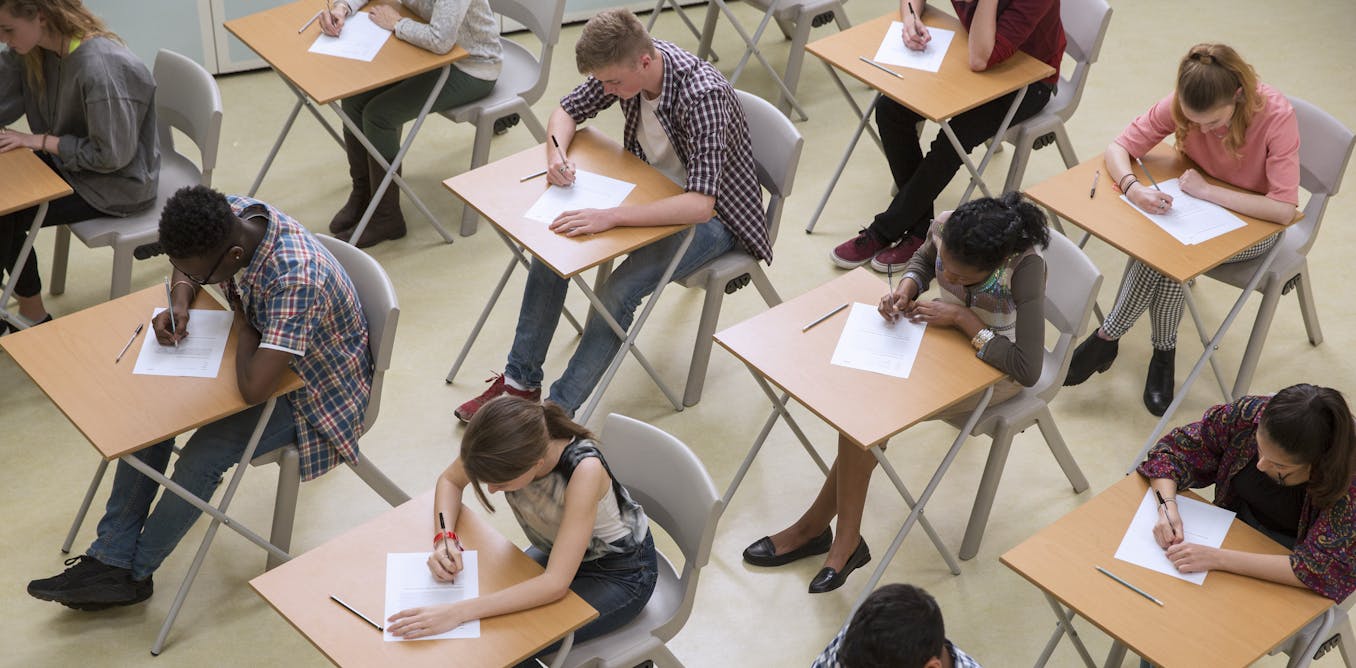School voucher programs that allow families to use public funds to pay tuition to attend private schools have become increasingly popular.
Thirteen states and the District of Columbia currently operate voucher programs.
In addition, 15 states have universal private school choice programs that offer vouchers, education savings accounts and tax credit scholarships.
More states are considering school choice and voucher programs as the Trump administration advocates for widespread adoption.
School vouchers have a long history in the U.S.
The first vouchers were offered in the 1800s to help children in sparsely populated towns in rural Vermont and Maine attend classes in public and private schools in nearby districts.
After the U.S. Supreme Court’s 1954 Brown v. Board of Education decision, in which justices ruled that separating children in public schools on the basis of race was unconstitutional, segregationists used vouchers to avoid school integration.
More recently, school voucher programs have been pitched as a tool to provide children from low-income families with quality education options.
As a scholar who specializes in education policy, law and politics, I can share how current policies have strayed from efforts to support low-income Black children.
History of school voucher programs
Peter Dazeley/Getty Images
Research from education history scholars shows that more recent support for school choice was not anchored in an agenda to privatize public schools but rooted in a mission to support Black students.
Over time, as school voucher policies grew in popularity, they evolved into subsidies for middle-class families to send their children to private and parochial schools.
School choice policies have also expanded to include education savings account programs and vouchers funded by tax credit donations.
Vouchers can redirect money from public schools, many of which are serving Black students.
Impact on public schools

Connect Images via Getty Images
States looking to add or expand school choice and voucher programs have adopted language from civil rights activists pushing for equal access to quality education for all children. For example, they contend that school choice is a civil right all families and students should have as U.S. citizens. But school voucher programs can exclude Black students and harm public schools serving Black students in a host of ways, research shows.
This impact of voucher programs disproportionately affects schools in predominantly Black communities with lower tax bases to fund public schools.
Since the Brown v. Board ruling, school voucher programs have been linked to racial segregation. These programs were at times used to circumvent integration efforts: They allowed white families to transfer their children out of diverse public schools into private schools.
In fact, school voucher programs tend to exacerbate both racial and economic segregation, a trend that continues today.
For example, private schools that receive voucher funding are not always required to adopt the same antidiscrimination policies as public schools.
School voucher programs can also negatively impact the quality of public schools serving Black students.
As some of the best and brightest students leave to attend private or parochial ones, public schools in communities serving Black students often face declining enrollments and reduced resources.
In cities such as Macon, Georgia, families say that majority Black schools lack resources because so many families use the state’s voucher-style program to attend mostly white private schools.
Moreover, the cost of attending a private or parochial school can be so expensive that even with a school voucher, Black families still struggle to afford the cost of sending children to these schools.
Vouchers can siphon school funding

kali9/Getty Images
Research from the Economic Policy Institute, a nonpartisan, nonprofit think tank based in Washington, D.C., shows that voucher programs in Ohio result in majority Black school systems such as the Cleveland Metropolitan School District losing millions in education funding.
This impact of voucher programs disproportionately affects schools in predominantly Black communities across the U.S. with lower tax bases to fund public schools.
Another example is the Marion County School District, a South Carolina system where about 77% of students are Black.
Marion County is in the heart of the region of the state known as the “Corridor of Shame,” known for its inadequate funding and its levels of poor student achievement. The 17 counties along the corridor are predominantly minority communities, with high poverty rates and poor public school funding because of the area’s low tax base due to a lack of industry.
On average, South Carolina school districts spent an estimated US$18,842 per student during the 2024-25 school year.
In Marion County, per-student funding was $16,463 during the 2024-2025 school year.
By comparison, in Charleston County, the most affluent in the state, per-student funding was more than $26,000.
Returning voucher policy to its roots
Rather than focus on school choice and voucher programs that take money away from public schools serving Black students, I argue that policymakers should address systemic inequities in education to ensure that all students have access to a quality education.
Establishing restrictions on the use of funds and requiring preferences for low-income Black students could help direct school voucher policies back toward their intent.
It would also be beneficial to expand and enforce civil rights laws to prevent discrimination against Black students.
These measures would help ensure all students, regardless of background, have access to quality education.




